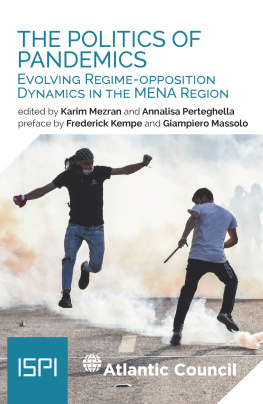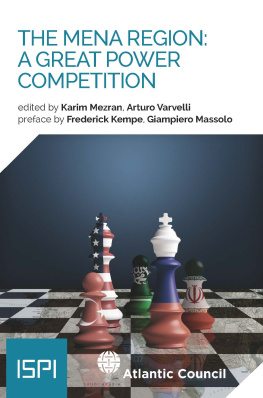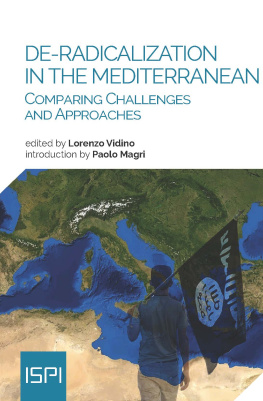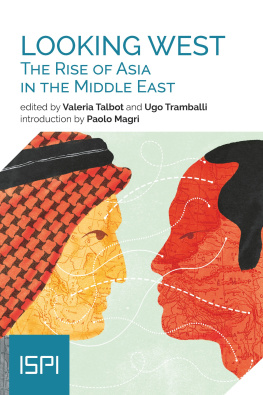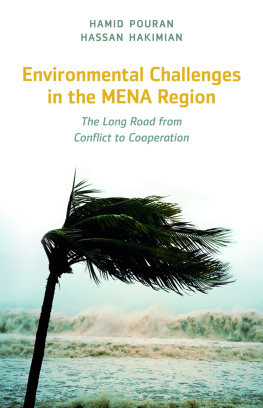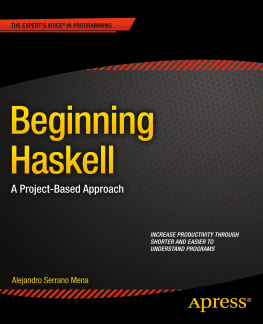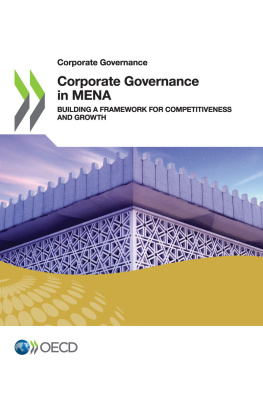2019 Ledizioni LediPublishing
Via Alamanni, 11 20141 Milano Italy
www.ledizioni.it
The Rise and the Future of Militias in the MENA Region
Edited by Ranj Alaaldin, Federica Saini Fasanotti, Arturo Varvelli, Tarik M. Yousef
First edition: November 2019
This report is published with the support of the Italian Ministry of Foreign Affairs and International Cooperation, in accordance with Article 23- bis of the Decree of the President of the Italian Republic 18/1967. The opinions expressed are those of the authors. They do not reflect the opinions or views of the Italian Ministry of Foreign Affairs and International Cooperation.
Print ISBN 9788855261388
ePub ISBN 9788855261395
Pdf ISBN 9788855261401
DOI 10.14672/55261388
ISPI. Via Clerici, 5
20121, Milan
www.ispionline.it
Catalogue and reprints information: www.ledizioni.it

Established in 2008, the Brookings Doha Center (BDC) is an overseas center of the Brookings Institution in Washington, D.C. As a hub for Brookings scholarship in the region, the BDC advances high-quality, independent research and policy analysis on the Middle East and North Africa.
In pursuing its mission, the BDC undertakes field-oriented research and programming that addresses and informs regional and international policy discussions, engaging key elements of governments, businesses, civil society, the media, and academia on four key areas:
I. International relations in the Middle East
II. Regional Security and domestic stability
III. Inclusive growth and equality of opportunity
IV. Governance reform and state-society relations
Open to a broad range of views, the BDC encourages a rich exchange of ideas between the Middle East and the international community. Since its founding, the BDC has hosted leading scholars from dozens of different countries; put on a large number of events, including high-level roundtables, and timely policy discussions; and published a series of influential Policy Briefings and Analysis Papers.
Indice
John R. Allen, Giampiero Massolo
Ranj Alaaldin
2. Case Studies
Mohanad Hage Ali
Andrea Plebani
Federica Saini Fasanotti, Arturo Varvelli
Giuseppe Dentice
Maria-Louise Clausen
Hafsa Halawa
Raj M. Desai, Tarik M. Yousef
Daniel Byman, Israa Saber
Federica Saini Fasanotti, Arturo Varvelli
Preface
Over the last few years, non-state actors, subnational armed groups and militias have played an increasingly decisive role in defining the political and security landscape in several countries across the Middle East and North Africa (MENA). Traditionally, the employment of non-state armed actors has represented a common tool utilised by many Arab states and particularly by authoritarian regimes as part of an intentional strategy to counterbalance regular defense forces in the domestic competition of power. Differently from the past, contemporary militias and armed groups are the direct results of a severe, and sometimes drastic, reconfiguration of the power relations in fractured, weak or conflict-affected countries like Iraq, Syria, Libya and Yemen. The status they have acquired in the eyes of local and external actors, combined with the ability to dominate and provide essential services in un-regulated areas where state institutions have either collapsed or proved ineffective, represent exceptional policy challenges. This holds particularly true for regional and international players engaged in ongoing efforts to stabilise post-conflict countries and develop accountable institutions. In several occasions, co-governance arrangements between state and non-state authority resulted in the hybridisation of security governance in conflict-affected countries.
Due to their access to substantial arms, resources, funds, and assets, subnational armed groups must be considered as increasingly relevant and resilient forces. These groups acquire further relevance when considering the legitimacy that, in some cases, they enjoy on the local and, foremost, the international level. Increasingly, indeed, militias are becoming essential interlocutors to foreign counterparts, in light of their role as a de facto substitute form many essential tasks that states facing crises and fracturing cannot otherwise obtain. Despite their different political orientations and backgrounds, many examples might be explanatory of this trend. In Iraq, state-sponsored armed groups have played a decisive role in curbing and defeating the ISIL onslaught in the country alongside weakened national forces. In Lebanon, Hezbollah has steadily consolidated its stance, not only proving its resilience but also showing vast degrees of operational autonomy. Since the beginning of the civil war, in Libya, both the governments in Tripoli and Tobruk have deputised regional militias for stabilizing and policing duties, a role for so long absent from the countys security landscape.
Faced with this complexity, the number of options for governments to confront this issue appears to be limited. On the one hand, suppressing them through coercive measures or politically marginalizing them can bring more costs than benefits to already fragile state institutions and exhausted conflict-ridden populations. At the same time, conventional Western models of Disarmament, Demobilization and Reintegration (DDR) and Security Sector Reform (SSR) appear hardly relevant or enforceable in countries where competition in fractured societies and the absence of strong institutions preclude their implementation. In light of this, both Arab states and the international community are called upon engaging in a dialogue with militias and non-state armed groups.
The complexity and dynamism of the new security system in fractured and conflict-affected states make any theoretical adjustment heavily reliant on the local, regional, and international contexts. While there are standard features that characterise armed groups and their interactions with states and societies, there are also differences that warrant closer attention, under the goal of formulating analytically rigorous and actionable policy recommendations. Due to militias exceptional nature, it is therefore compulsory to develop dedicated and tailored approaches, to implement practical solutions that strengthen the rule of law without neglecting the demands and expectations of subnational groups.
This volume, published by ISPI and Brookings Doha Center, addresses the void in the current debate on subnational armed groups, by challenging the conventional understanding of armed non-state actors, focusing on the multiple ongoing conflicts and turmoil in the MENA region. The authors place a particular emphasis on whether armed groups can be integrated into state-building initiatives and whether these actors can play a constructive role with other service providers. Meanwhile, the volume will offer a comprehensive analysis of the dynamics which are commonly neglected, such as militias systems of territorial control, their use of natural resources as well as their sources of funding. In an attempt to develop a debate on this topic crucial to regional security, this analysis is aimed at forging a discussion on potential scenarios for conflict mitigation, as well as developing mechanisms that can establish rules and limits for warfare and access to communities that need urgent humanitarian support.






